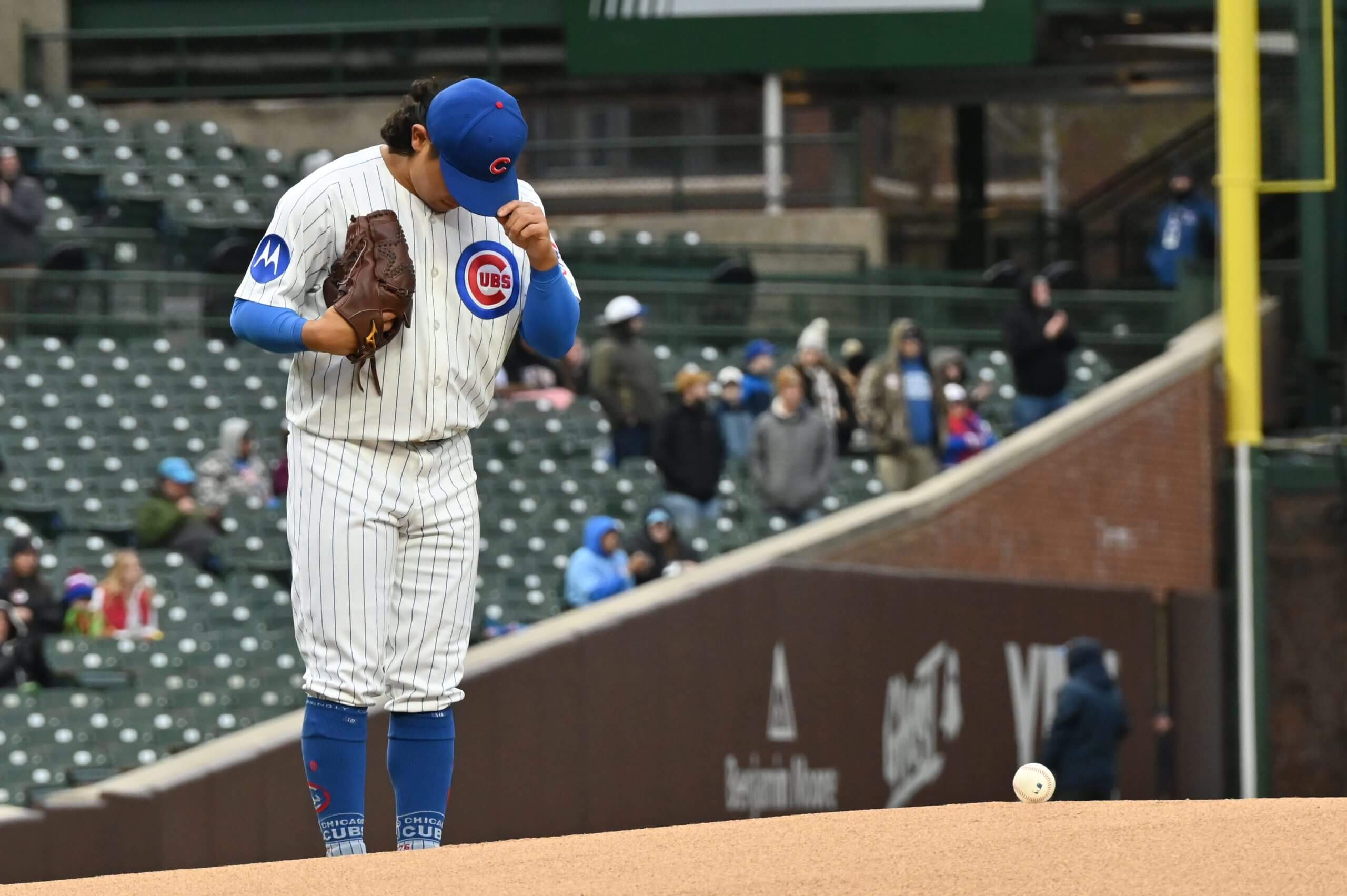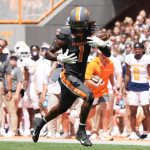
CHICAGO — The Cubs ended a solid homestand Wednesday with a 6-2 loss to the Texas Rangers and news that Justin Steele was heading to the injured list with left elbow tendinitis. They now head on a daunting six-game road trip where they’ll face the Los Angeles Dodgers and San Diego Padres.
“It’s a winning homestand and it’s on to the next challenge,” manager Craig Counsell said after a third straight series win. “The next challenge is ahead of you, and that’s how we’ve got to look at it.”
The news isn’t all bad. The Cubs are 9-6 to start the season and days like Wednesday, when the offense and starting pitcher both struggle, have been rare. Here are three takeaways before the Cubs head out West.
Losing Steele is not going to be easy, but when it happened a year ago, it felt like a devastating blow. It stings this time, as well. But the belief that it could be a minimum stay eases the pain a bit. As does the fact the Cubs now know that Shota Imanaga can give them ace-like outings.
Of course, days like Wednesday have to be the exception. Imanaga seemed to be cruising along early, giving up a wind-aided home run and not much else through four innings. But a four-run fifth, which saw the Cubs’ normally sure-handed defense struggle slightly and Imanaga’s fly-ball tendencies bite him, sank the Cubs.
Advertisement
Still, the team has looked strong early. The offense has carried the group, but there has been enough quality starting pitching to impress.
“We definitely have the depth in place to take care of situations like this,” Steele said. “We’ve proved that in the past.”

Shota Imanaga is 2-1 with a 2.70 ERA and 0.90 WHIP. (Patrick Gorski / Imagn Images)
Imanaga’s rough outing Wednesday likely drops him down a notch, but he entered the day second among pitchers in WAR (Baseball-Reference). But he wasn’t alone on the leaderboard as Matthew Boyd has put up the fourth-most WAR among NL pitchers through two starts. That’s quite a combo to lead the way in Steele’s absence.
It was the bullpen and offense that sunk the team last season as the rotation was largely a strength. If Steele comes back healthy and looking like his normal self, and Imanga and Boyd can stay even close to the level they’re performing, the rotation should once again be a strength.
With four off days over the next two weeks, Counsell could get away with needing a fifth starter only once if Steele is on the IL for a minimum stay. Counsell could do that and still need to have his pitchers throw on four days’ rest four times over the 11 games they’ll have.
Jameson Taillon’s numbers aren’t going to blow anyone away. But there’s been something different about him after a dreadful first start when he gave up six runs in 4 1/3 innings against the Arizona Diamondbacks. Since then, Taillon has looked as good as he ever has in a Cubs uniform. In particular, Taillon is missing bats these last two outings at a rate that just hasn’t been seen lately.
“My start against Arizona, I felt like I was getting a little wider with my feet out of the stretch and my first move would be a little bigger, then slower, and my arm was getting longer,” Taillon said. “I wasn’t on time. I feel like I was losing deception. So I narrowed up the feet a little bit, make sure I’m really gathering over the backside and then moving fast out of that. That just keeps everything a little more connected, more compact, a little crisper, more repeatable.”
Advertisement
The results have been pretty impressive. In his last two starts, he’s combined to toss 12 innings and allow five runs. But what’s stood out is his 26.5 percent strikeout rate. And most eye-popping is that he has induced 31 swings-and-misses, including a Cubs career-high 19 in his six innings against the Athletics in Sacramento.
“I don’t know if I can keep doing it, but I think that’s a good sign of how crisp the stuff was,” Taillon said. “The average fastball velo was up a little bit. The stuff was crisper. I thought the consistency of the command — I landed a 3-2 curveball, I don’t know the last time I did that with good shape. I’m seeing things I haven’t been able to do.”
Taillon said he was also able to drive his fastball up and in to lefties, something he just was unable to do last season. He was able to keep the shape of the pitch and live in the top of the zone with it, as well. The hope is the way he’s felt the last two starts continues.
“That was the feeling I’ve been looking for,” Taillon said. “The overall crispness of the stuff, consistency of the command and the different shapes, that’s what I want. Now it’s about making sure we stay on that track for the next six months. Don’t let bad habits creep in, stay really on top of what we’ve been doing. Take that pitch package out there every fifth day.”
This past week was the first time fans at Wrigley Field got an up-close look at Matt Shaw’s unique stance. The rookie isn’t tearing it up offensively, going into the off day with a 77 wRC+. But he’s taking his walks (10 in 14 games) and has looked quite a bit better at the plate since the team arrived stateside.
Still, his setup gives pause as it’s anything but conventional. The righty stands back in the box, his hands low and the toes of his front foot nearly pointing at the catcher with his heel raised. As the pitcher reaches back to deliver the ball, Shaw often unleashes a large leg kick, his foot planting just as the ball is released.
Advertisement
These aren’t the mechanics one would teach a young player. It isn’t how Shaw looked in high school. But he wasn’t nearly the player he is now. Adjustments over the years have led Shaw to this place and it’s helped fuel his rise to a first-round draft pick who mashed his way through a year and a half of minor-league baseball before earning a spot on the Cubs’ Opening Day roster.
“Those adjustments have helped me hit better,” Shaw said. “High school was different and I didn’t hit great in high school. Started to make adjustments in college and hit better. Continued to make adjustments in pro ball and continued to hit better. Those adjustments have been positive for me.”
Still, seeing something as unique as Shaw’s stance usually means there are reasons for it. Shaw explained why his stance is the way it is.
“Pointing my toe in just keeps everything connected,” Shaw said. “It’s simple, I don’t have to load and then go. The leg kick just goes naturally. I’m ready to rock in my position, so it’s just leg and go. It makes it more simple. Lower hands, again I feel connected and close.
“The leg kick, I don’t think about it. There are times I felt like I had a normal stride, and I look at the video and my leg’s up to there (shows leg very high). So it happens very naturally without me thinking about it. It’s just a timing thing.”
Shaw has the benefit of hitting in a lineup filled with talent. The pressure doesn’t have to be on him to produce with players such as Kyle Tucker, Ian Happ and Seiya Suzuki. He can take his time and ease into his role while the Cubs can be patient and trust that a kid who has always hit will eventually find his rhythm at the plate.
(Top photo of Pete Crow-Armstrong: Justin Casterline / Getty Images)
This news was originally published on this post .







Be the first to leave a comment